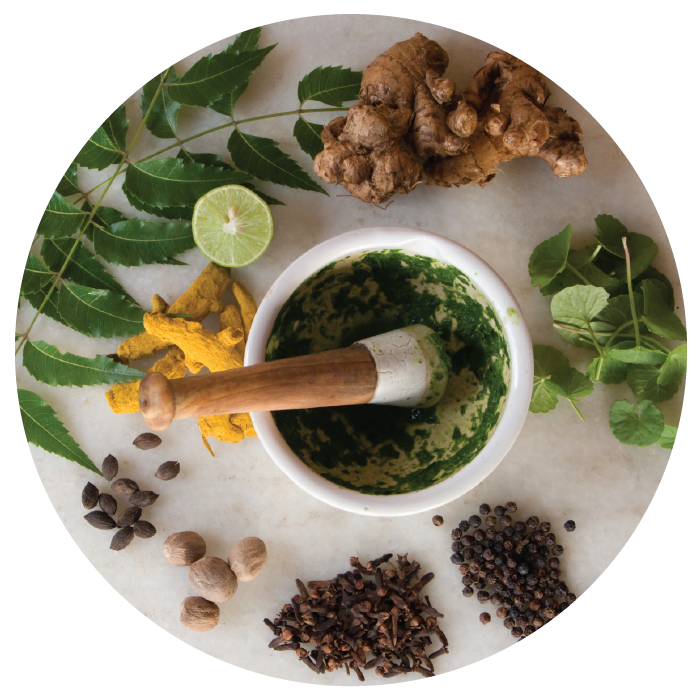
Yoga and Ayurveda are considered to be sister sciences. These ancient traditions developed over a period of thousands of years and provide models for self-care and optimal well being. Ayurveda uses three “doshas”—Vata, Pitta, and Kapha— to explain an individual’s unique constitutional makeup. Each is aligned with certain elements and a time of year.
Vata is associated with winter, air, and space. The abundance of Vata during the winter season can lead to symptoms like anxiety, dry skin, constipation, joint discomfort, and more, especially in individuals with a Vata constitution. Living according to Ayurvedic principles allows us to balance excess Vata brought on by the winter season in order to combat stress, digestive issues, brain fog, and other patterns of disease in the body.
When Vata is high, we may experience scattered thoughts and difficulty finding a daily rhythm. We can balance Vata during the winter season by:
- Have a morning ritual (daily routine or Dinacharya). Use a neti pot, do a warm sesame oil self-massage (Abhangya), meditate, or do some other contemplative morning practice.
- Stay warm. Dress in layers and protect yourself from the elements.
- Eat with intention. Try to eat at the same times each day. Make mealtimes a ritual of reverence, mindfulness, and gratitude.
- Cook with warming spices like cinnamon, turmeric, cloves, and black pepper.
- Stay hydrated by sipping warm water, drinking herbal teas, and eating nourishing soups and stews. Try this recipe: Potato Leek Soup with Fennel Seeds & Red Pepper
- Get lots of rest. Prioritize sleep and relaxing activities. Aim to get to bed around the same time each night; before 10 p.m. is ideal.
By creating time and space in our lives for self-care practices like these, we can experience greater serenity and wholeness through the winter and throughout the year.
Want to learn more? Check out our yoga workshops or take Deepak Chopra’s online Dosha Quiz.
